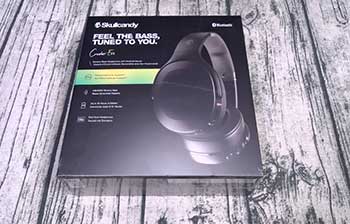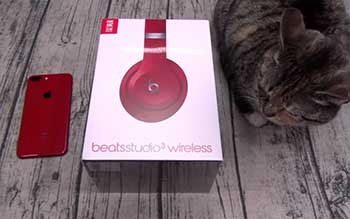With their oversized drivers and bass-boosting features, the Skullcandy Crusher Evo and Beats Studio 3 headphones promise to rattle your skull with thumping low end. But which model actually delivers the most powerful, customizable bass experience?
This detailed comparison breaks down how the Crusher Evo and Studio 3 match up for sound quality, comfort, features, and value. Find out which bass lover’s headphones you should pick up.
A Brief Comparison Table
| Features | Skullcandy Crusher Evo | Beats Studio 3 |
| Driver Size | 40mm | 40mm |
| Battery Life | 40 hrs | 22 hrs |
| Noise Cancellation | Active | Active |
| Onboard Controls | Buttons | Buttons |
| Weight | 319g | 215g |
Overview of the Skullcandy Crusher Evo

The Crusher Evo are Skullcandy’s flagship over-ear headphones designed to amplify and customize bass. Key features include:
- Huge 40mm drivers capable of rich, booming bass
- Sensory Bass slider lets you control intensity of the bass
- Active noise cancellation using dual mics
- Tile tracking integration helps find lost headphones
- 40+ hour battery life per charge
- Built-in call, track, and volume controls
- External device pairing via Bluetooth 5.2
With the Sensory Bass slider, you can easily shift from subtle, accurate bass to chest-thumping, skull-rattling immersion tailored to your preferences. The Crusher Evo headphones are all about that bass.
Overview of the Beats Studio 3
As a pioneer of bass-driven sound, Beats packs plentiful low-end power into its Studio 3 over-ear headphones:
- 40mm drivers tuned with Beats’ signature emphasis on bass
- Active noise cancelling blocks ambient noise during playback
- Up to 22 hours of battery life with ANC on
- On-ear controls for audio playback and calls
- Fast Fuel quick charging provides 3 hours of use from 10 minutes charged
- Bluetooth connectivity and multi-device pairing
While not as overtly customizable as the Crusher Evo, the Studio 3 still delivers that heart-thumping Beats bass profile. And the stylish, comfortable design matches the brand’s famous fashion-forward aesthetic.
Also Read: Comparison Between the Skullcandy Crusher Wireless and Crusher EVO
Key Differences Between Skullcandy Crusher EVO and Beats Studio 3
Now that, we have dicussed about their basic’s. Let’s compare across thier key categories:
Detailed Sound Comparison
When it comes to audio, both the Crusher Evo and Studio 3 boast enlarged 40mm drivers to help produce booming bass. But there are some key sound differences between the two models:
Bass Adjustability

What sets the Crusher Evo apart is the unique Sensory Bass slider that goes from deep, punchy bass to earth-shaking intensity you can feel. It allows you to fine tune the low end to satisfy your bass cravings.
The Studio 3 has impressive bass power too, but no user adjustment capability. The Beats sound sticks to its robust bass roots without room for tweaking.
Overall Balance
Because of the adjustable bass, the Crusher Evo can better adapt its sound profile for a more even balance depending on content. At lower Sensory Bass settings, the overall sound is quite neutral with present mids and highs.
The Studio 3 tends to focus its power on accentuated bass, which gives great thump on hip hop or EDM but can overshadow non-bass elements on other music genres. The bass emphasis is always present by design.
Noise Cancellation
Both headphones effectively cut out ambient noise like airplane engines or office chatter using active noise cancellation. This lets you focus on the robust audio.
The Crusher Evo seems to do a slightly better job minimizing voices and higher pitched sounds. But for blocking droning low rumbles, the two are comparable. You get solid noise reduction from either.
Comparison of Key Features
Beyond sound quality, there are some other noteworthy differences between the Skullcandy Crusher Evo and Beats Studio 3 when it comes to features and design.
Battery Life
The Crusher Evo gets significantly better battery life, lasting around 40 hours per charge with active noise cancellation on. The Studio 3 taps out at just 22 hours with ANC.
Nearly double the battery life gives you reduced headache worrying about constantly recharging the Crusher Evo when travelling or on long days out.
Comfort
At 319 grams, the all-plastic Crusher Evo is noticeably heavier on the head than the lighter 215 gram Studio 3. The plush Beats earcups are also softer and fit more comfortably for long listening sessions.
Skullcandy’s industrial design can put more pressure on the crown of the head after an hour or two. The Studio 3 better cushions the weight.
Device Pairing
You get slightly more flexible device pairing capabilities on the Crusher Evo thanks to Bluetooth 5.2 support and the ability to have two devices connected simultaneously.
The Studio 3 utilizes Bluetooth 4.2 and can only pair with one device at a time, requiring manual re-pairing to switch audio sources. Not a huge pain but lacks the convenience of the Crusher Evo.
Price
The typical retail price of the Crusher Evo comes in around $200, notably cheaper than the Studio 3’s higher $350 MSRP.
You get much more bang for your buck with the Crusher Evo in terms of sound customization and battery efficiency. The Studio 3 costs quite a premium for the marquee Beats branding.
Also Read: Comparison Between the Q30 and Q35
Frequently Asked Questions (FAQs)
In terms of pure audio quality and value, Skullcandy tends to come out ahead of Beats headphones. You can get solid bass-driven sound for less money from Skullcandy, along with nice bonus features like the Crusher Evo’s adjustable bass slider. However, Beats still leads in premium branding and aesthetics. So pick Skullcandy if you want greater overall value – go Beats for the luxury styling.
Some headphones that can compete with or even surpass the Skullcandy Crusher Evo for bass performance and general audio quality include the Sony WH-1000XM4, Bose QuietComfort 45, Sennheiser Momentum 3 Wireless, and Bowers & Wilkins PX7. However, none match the Evo’s unique adjustable sensory bass feature that takes low end immersion to the next level.
Overall, Skullcandy headphones like the Crusher Evo provide heavier, deeper bass versus Beats models like the Studio 3. The Sensory Bass slider on the Crusher Evo also allows you to take the bass intensity higher than even the robust Beats profile. However, Beats may sound subjectively “better” to some listeners since the bass doesn’t overwhelm the rest of the mix. But for pure low frequency extension and power, Skullcandy wins.
Yes, the various Skullcandy Crusher headphone models generally provide very good sound quality – especially in the bass department. The large drivers deliver clean, distortion-free bass even at high volumes. Mids sound smooth and natural. Treble is slightly muted but avoids harshness. While colored towards bass, the well-balanced sound works great for hip hop, EDM, rock, and other bass-driven genres. The Crusher Evo also has an adjustable bass slider for more exact sound customization. Overall, excellent audio for the price from Skullcandy.
Also Read: Comparison Between the Anker Q20 and Q30
Final Thoughts
Both the feature-packed Skullcandy Crusher Evo and fashionable Beats Studio 3 bring thunderous bass in slick over-ear designs. You really can’t go wrong with either pair of headphones.
The Crusher Evo pulls ahead for its innovative adjustable sensory bass, improved battery efficiency, and more affordable pricing.
But the iconic luxury styling and polished sound of the Studio 3 retains its appeal too. In the end, choose the Crusher Evo if you want to fine tune your bass experience – go Studio 3 to indulge in Beats’ elite flair.
Whichever model you pick, turn the volume up and let your skull be crushed by beats and bass to the max!

